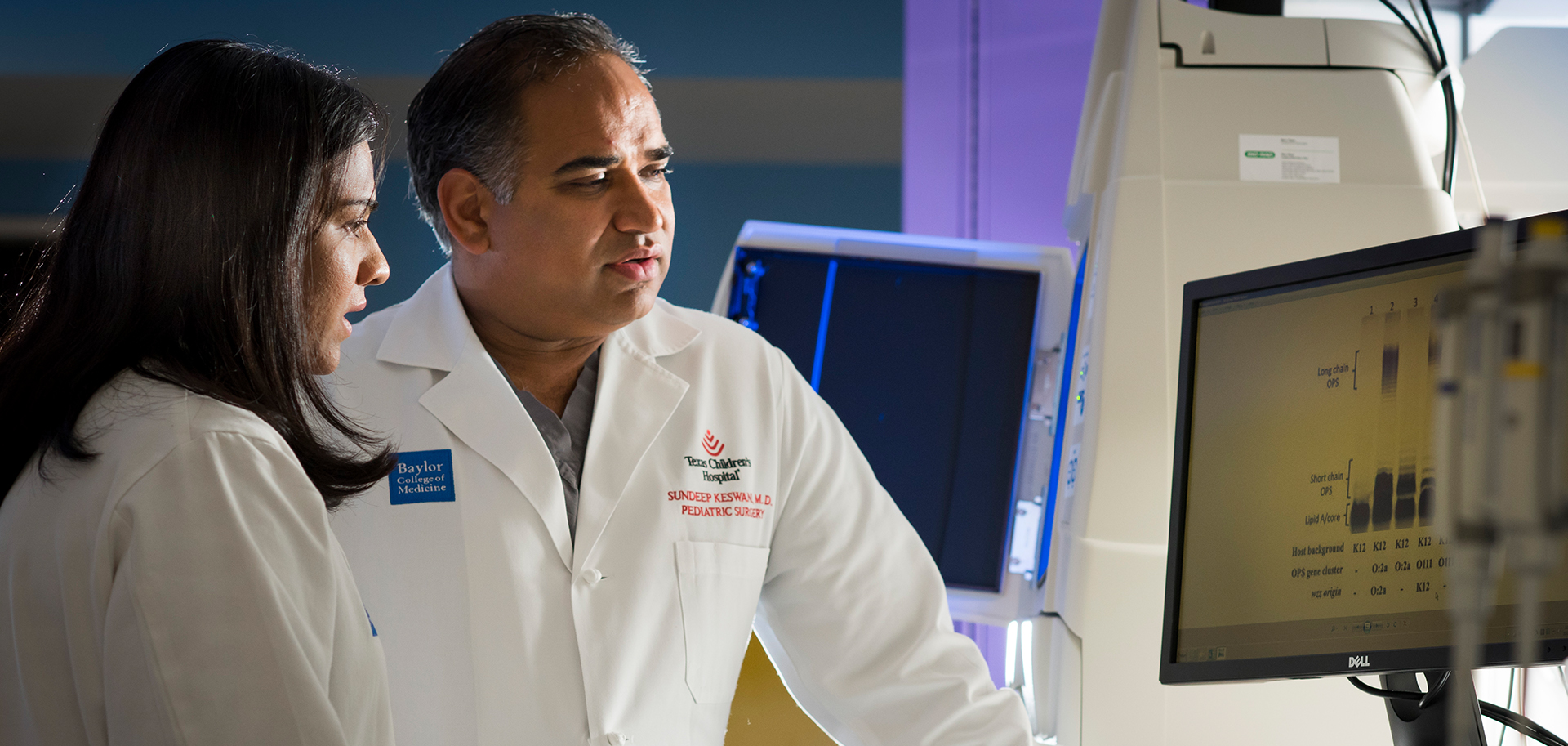NIH awards major grant for congenital heart disease research
A team of scientists from Texas Children’s Hospital, Rice University and Baylor College of Medicine won a prestigious R01 grant from the National Institutes of Health (NIH) to study dynamic processes and cellular players linked to discrete subaortic stenosis (DSS). This congenital heart disease results in the formation of a fibrous membrane that obstructs and causes increased pressure in the left ventricular outflow tract (LVOT), the pathway through which blood passes into the aorta.
The four-year, $2.2 million grant administered by the national Heart, Lung and Blood Institute will allow a team led by Texas Children’s surgeon and director of surgical research Dr. Sundeep Keswani and Dr. Jane Grande-Allen, Isabel C. Cameron Professor of Bioengineering at Rice University and chair of the university’s Department of Bioengineering, to develop computer and tissue-engineered models to predict the recurrence of DSS lesions of the LVOT.
In normal hearts, blood passes freely through the tract from the left ventricle to the aorta. In patients with DSS, a fibrous tissue membrane forms and prevents blood flow from leaving the heart. Heart surgery is the only current option to manage the disease, but up to 30 percent of patients have an aggressive form of DSS in which the membrane recurs. These patients may have to undergo further cardiothoracic surgery. Researchers believe a better understanding of how the fibrous membranes form will help doctors manage the disease.
"We have found some striking differences between patients who have the aggressive form of the disease and those who do not," Keswani said. "These findings will give insight into how this membrane forms and perhaps why some humans are more likely to develop it. This project is the just the beginning of understanding how different kinds of biomechanical forces interact with cells in the LVOT to produce fibrosis."

Working with co-investigator Philippe Sucosky of Wright State University in Ohio, the research team has developed preliminary computational fluid dynamic models that mimic the complex shear forces and the altered geometry of the tract observed in DSS. The models will help the researchers develop a physical bioreactor to investigate interactions between the major cellular players in DSS.
"Understanding the mechanisms of how altered shear forces induce fibrosis in the LVOT is a major gap in our knowledge," Grande-Allen said. "If we can predict recurrence of DSS lesions of this outflow tract, we can change the way the disease is managed and really improve the quality of life for these children."
Preliminary computer model data suggested that altered internal geometries in children's hearts generate turbulence in the flow of blood. That affects the shear forces in the LVOT that in turn trigger an inflammatory response by endothelial cells and encourage the formation of fibrous tissue.
In the future, Grande-Allen and Keswani expect their work will help prevent fibrotic lesions by identifying targets in advance. That ability could also help treat other fibrotic cardiovascular diseases associated with altered flow.
Keswani said Texas Children’s, ranked No. 1 in the nation for pediatric cardiology and heart surgery by U.S. News & World Report, is uniquely suited to take on the project.
"The world-class facilities and tremendous volume have driven this project from the bedside to the bench, and this award will hopefully allow us to return to the bedside armed with new tools to help these patients," Keswani said. "This collaboration is the perfect weave between bioengineering and surgery. Bioengineers bring a unique way of approaching surgical challenges and surgeons bring the surgical insight and the science, resulting in a synergistic relationship. In addition, it has been absolutely essential to the success of this project to have the support of our surgical leadership, who are strong advocates for surgical research as a means to develop innovative care for patients."
The project also received support from the Virginia and L.E. Simmons Family Foundation Mini-Collaborative Research Fund and a gift from Lew and Laura Moorman.
